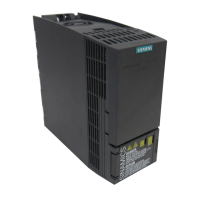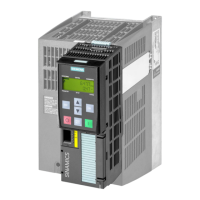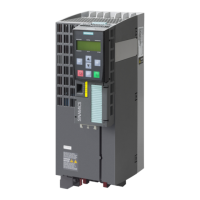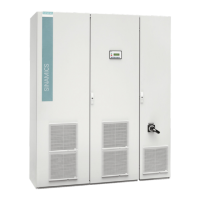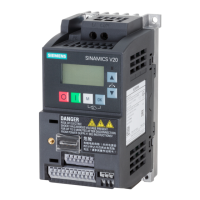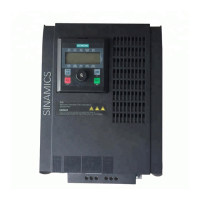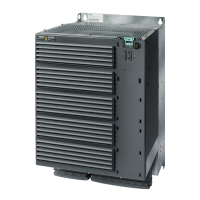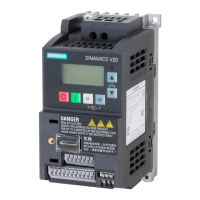4.9.8 Connecting the motor to the converter in a star or delta connection
Overview
Standard induction motors up to a rated power of approximately 3 kW are usually connected in
star/delta connection (Y/Δ) at 400 V/230 V. For a 400‑V line supply, you can connect the motor
to the converter either in a star or in a delta connection.
Function description
Operating the motor in a star connection
I
I
1
8
8
1
I
0
0
1
I
3
3
1
9
+]
9
8
8
:
8
8
9
9
:
:
In a star connection, the motor can provide its
rated torque M
N
in the range 0…rated fre‐
quencyf
N
.
Rated voltage U
N
= 400 V is available at a rated
frequencyf
N
=50Hz.
The motor goes into eld weakening above the
rated frequency. In eld weakening, the avail‐
able motor torque decreases proportionally
with 1/f. In eld weakening, the available pow‐
er remains constant.
Operating the motor in a delta connection with 87 Hz characteristic
I
I
1
෭෪I
1
8
8
1
෭෪8
1
෭෪3
1
9
9
+]+]
I
0
0
1
I
3
3
1
9
8
8
:
8
8
9
9
:
:
In a delta connection, the motor is oper‐
ated with a voltage and frequency above
its rated values. As a consequence, the
motor power is increased by a
factor √3≈1.73.
In the range f = 0 … 87 Hz, the motor can
output its rated torqueM
N
.
The maximum voltage U= 400V is avail‐
able at a frequency of f=√3×50Hz ≈
87Hz.
The motor only goes into eld weakening above 87Hz.
The higher motor power when operated with an 87 Hz characteristic has the following
disadvantages:
• The converter must supply approximately 1.73x current. Select a converter based on its rated
current - and not its rated power.
• The motor temperature increases more signicantly than when operated with f≤50Hz.
• The motor must have windings that are approved for a voltage> rated voltage U
N
.
• As the fan impeller rotates faster, the motor has a higher noise level than operation with
f≤50Hz.
Installing
4.9Connect the line supply, motor and braking resistor
SINAMICS G120C Converters
Operating Instructions, 02/2023, FW V4.7 SP14, A5E34263257B AK 81
